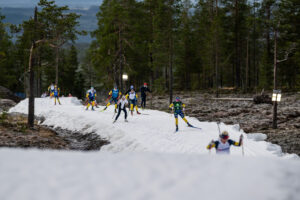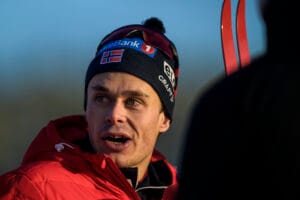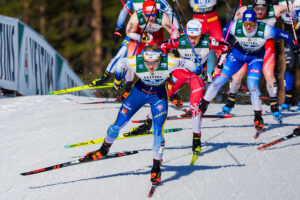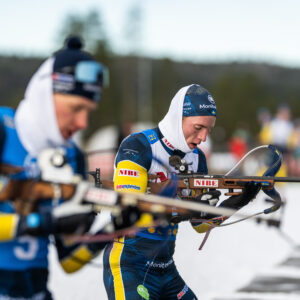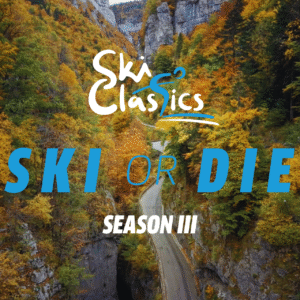July training can make or break your ski season
July can separate the winners from those who stagnate. Poor choices now can cost you energy, technique, and the form you’ve built up throughout the year.
Many believe summer is just about logging hours, but in July, it becomes clear who is truly serious and who is just playing along.
Former Norwegian national team coach Geir Endre Rogn believes many underestimate how crucial summer is for building the form that will last throughout winter. This is the time when the foundation is either laid or squandered.
“What you do in July is not irrelevant. It’s during the summer that the biggest differences within training groups arise – and that’s no coincidence,” he says to Langrenn.com.
“A lot of training is quite similar in spring and fall, but in the summer, athletes are often more left to themselves. Then it becomes obvious who has a good plan – and who doesn’t.”
Rogn was the head coach of the women’s national cross-country team until 2020 and now provides training guidance for athletes up to national team level through his company Topptrent.com. After nearly 20 years in the field, he sees a clear trend: many athletes, especially younger ones, can make major progress during the summer.
“We see that those who truly put in the work make big strides during summer. It lays the foundation to handle and benefit from fall training and to build stable form that lasts through winter,” he says.
Also Read: Annual training cycle and its planning
Specific training and technique
Variation is good and cycling and running have their place. But the main goal remains clear:
“It’s fine to train a lot and with variety in the summer, and you’re welcome to get caught up in cycling and running trends. But it’s important to remember that the goal of your training is to improve your skiing for the winter,” says Rogn.
“That’s why you must also prioritize enough specific training in July, especially on roller skis.”
He notes that many are sloppy with technique, especially on the long, easy sessions that are common in summer.
“In easy terrain, many end up skiing too upright, especially in double poling, but also in skating. Remind yourself to keep your weight forward on the balls of your feet, so you get the crucial full-body fall. That way, you place more bodyweight over the poles and get better direction in the skating push. This is the key technical focus everyone should keep in mind during this type of training going forward,” says Rogn, adding:
“If there’s one task I recommend bringing into your long sessions, it’s this one.”
You can also train technique during intervals:
“Long threshold sessions on roller skis are perfect for finding good flow. Ask someone to film you so you can study the details, even if you’re not training with a club or team,” says Rogn.
Related Article: Setting SMART goals for the summer training season
Periodization and training variety
Rogn recommends a three-part structure – in periodization, intensity, and training type. This is especially important in summer to prevent training from becoming too monotonous or sluggish, particularly for younger athletes. Their muscles don’t handle monotony well,” Rogn emphasizes.
“Include some periodization and variety, add elements of harder intervals, speed, and hill sprints to create muscular variation,” he says, and continues:
“A typical structure can be two weeks focused on volume and threshold training, with some speed and hill work included, followed by one week with lower volume but more speed and intensity.”
He further recommends distributing training relatively evenly between classic roller skiing, skate roller skiing, and running – the model that has been most used and most successful at national team level.
When it comes to hard sessions, he divides them quite evenly between the three modalities, with one clear guideline:
“Threshold sessions should primarily be done on roller skis, since technique and efficiency matter a lot for threshold speed, while running is well-suited for some of the more intense workouts.”
Read More: Train smarter, not harder: How to optimize your ski training
Less cycling – and wait with ski bounding (elghufs)
Rogn also advises cutting back on cycling now.
“Cycling is good in the spring as a gentle transition, but from July onward you should prioritize running and roller skiing,” he tells Langrenn.com.
Ski bounding intervals, however, can wait until fall.
“Use spring and early summer to build a good running stride, so you carry that into the rest of the training season. That way, joint long runs won’t become overly taxing later in the fall. Those sessions are not where you want to burn out,” explains Rogn.
Summary
Summer – and especially July – is not the time to “just rack up hours.”
Now is the time to be smart: ensure enough specific training, conscious technical work, and a plan that guarantees variety. This is when you have the chance to make the moves that will truly elevate you come winter.
Geir Endre Rogn was the women’s elite national team coach until May 2020 and coached the junior national team for two years before that. He also spent eight years coaching at NTG Geilo. Now, through Topptrent.com, he provides training guidance to both ambitious athletes and enthusiastic amateurs.
Read More
Build your personalized training plan – Part 1: Train smart with limited time
Build your personalized training plan – Part 2: How to train when you have more time
Are you interested in training for long-distance and traditional cross-country skiing? Click HERE and read more about it.

